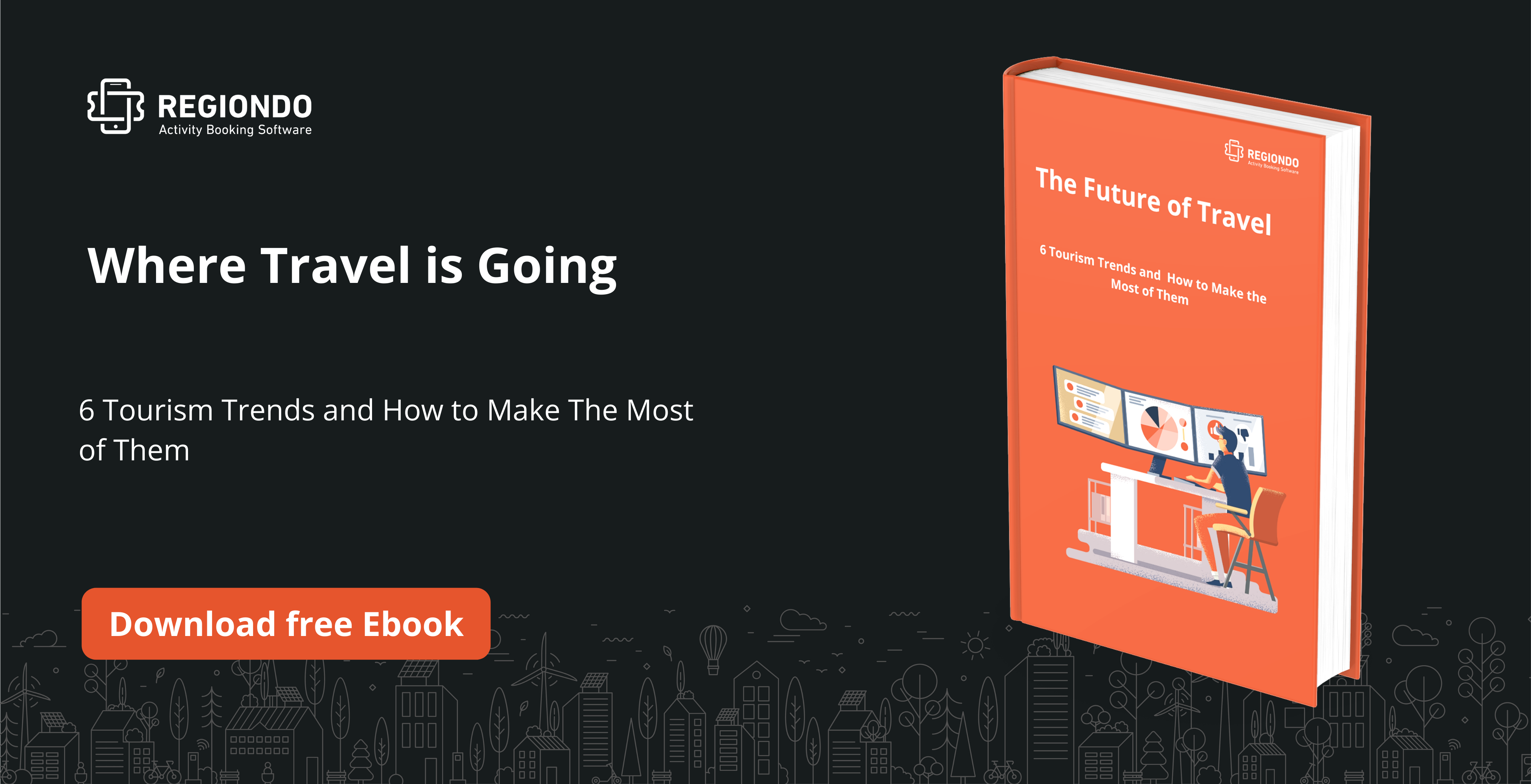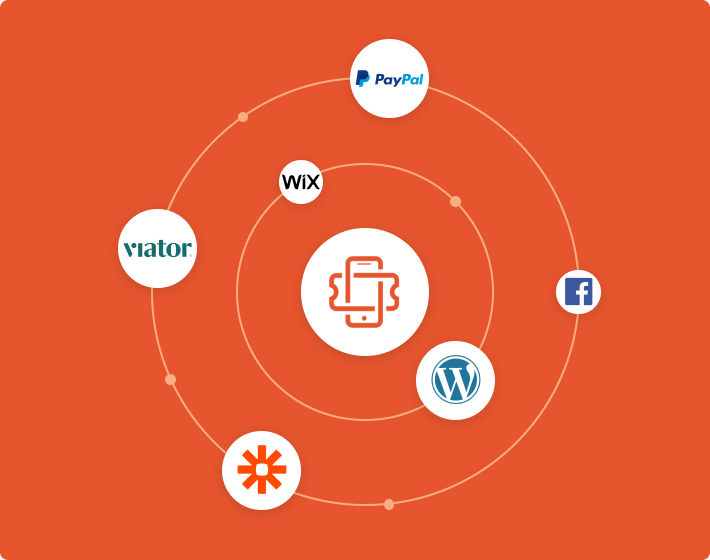The tours and activities sector is the third-largest in the global travel and tourism industry. Its market size reached US$135 billion globally in 2016. This in-destination travel segment was also growing steadily until the COVID-19 pandemic struck in 2020, affecting businesses worldwide across all industries.
And in wake of the pandemic and beyond, it’s important to remain up to date with the booking statistics available. This will ensure you can anticipate industry trends and make the most of them.
Luckily for you, we’ve done the groundwork of collecting and analyzing some of the most recent data. This article is a compilation of some of the most significant and current tour and activity booking statistics.
Let’s dive in.
Booking Statistics
1. Most booked activities
Pre-COVID
According to TourScanner’s tours and travel activities report 2019, most holidaymakers enjoy visiting famous attractions, museums, and city sightseeing. The most popular cities are Rome, Paris, and Barcelona, with the Colosseum, Eiffel Tower and Sagrada Familia among the top attractions.
Dubai is another popular destination entering the list with activities like the Desert Safari and the Burj Khalifa skyscraper.
During COVID
In November 2020, Tripadvisor and Phocuswright released a joint research paper offering lots of insight into the shifting travel trends in the wake of the ongoing COVID-19 pandemic.
The study reveals that most travelers (65%) are opting for less crowded destinations to tour. More than half of the travelers surveyed (52%) reported a new preference for outdoor trips in contrast to the pre-COVID preferences. In 2019, parks and nature tours accounted for 25% of Tripadvisor’s attraction page views. This number has shot up to 34% during the COVID period (between May and September 2020).
What’s more, the Panel of Experts at UNWTO (World Tourism Organization) also predicts rising demand for nature-based tours and activities.
2. Most booked destinations
Pre-COVID
Before the pandemic, travelers enjoyed international travels and tours as they pleased. But since the beginning of 2020, things have completely changed.
During COVID
According to UNWTO’s latest data, international arrivals dropped by 74% in 2020 due to widespread travel restrictions.
Euronews also reports that most consumers in Europe are going for domestic tourism or booking trips closer home. The most popular destinations in Europe are now Iceland and Portugal, most likely as a result of their UK green listing.
3. Booking timings
Pre-COVID
More and more travelers appear to prefer making travel bookings at the last minute using their smartphones. This is evidenced by findings on Google trends which shows that the use of the phrases “tonight” and “today” in travel-related searches increased by a whopping 519% in the last 5 years.
When it comes to the most popular day when consumers purchase their travel, Monday is at the top with Saturday being the quietest.
During COVID
The picture is not so different during this COVID era. According to the travel trends predictions by HomeToGo, in light of the pandemic and based on data collected between October and November 2020, more travelers are still booking last-minute trips.
On average, the number of days to check-in is 50 days, which is a significant drop of 37.5% before the pandemic.
This flexibility is because most people want to ensure their destinations are still open for travel.
4. Online booking trends
Pre-COVID
The tour and activity sector has recently begun adopting technology, with many operators establishing online booking systems for their companies.
From 2010 when only 25% of operators used reservation technology, the number significantly increased to 71% in 2019.
That said, research shows that most tours and activities sales are still mainly offline. The percentage of online bookings has been less than 30%, but it’s growing at a rapid rate.
Other research findings show that 60% of leisure travel and 41% of business travel arrangements are made online.
But where exactly do consumers make their bookings online? According to Phocuswright’s survey, 18% of the online activity bookers reported using the activity provider’s website to buy activities – the most of any other channel.

During COVID
In the face of the COVID-19 pandemic, almost every industry is embracing technology like never before, and the tours and activities sector isn’t an exception.
Apart from the “work from home” culture that has skyrocketed, the other reason many tour operators are adopting automation is that more consumers are opting to book their travels over the internet after carrying out extensive research online as well.
A survey by Statista reveals that 65% of the global travel and tourism revenue in 2020 was from online sales.
5. Online booking channels
We are also seeing variation in the online sales channels for tours and activities providers. According to Regiondo’s online booking statistics, there’s a notable variation in website sales and POS (Point of Sale) when comparing data 1 year pre-COVID and the last 3 months. Specifically, website sales pre-COVID constituted 55.5% while on-site sales were 19%.
Then, website sales grew to 75.8% during COVID and on-site sales via POS dropped to 12.3%. Another thing to note is the drastic reduction in sales through 3rd party channels like OTAs (Online Travel Agencies). They went down from 14.1% pre-COVID to just under 3% during the pandemic.
In the last 3 months, website sales are down to 70.25% as other channels are going back to their original levels.

How To Ride the Trends
It’s evident that the COVID-19 pandemic is still far from over and the recovery outlook for the travel industry remains cautious. Even so, all is not lost. As a tour or activity provider, your best chance at success is staying alert and learning how to make the most of the booking trends in the industry.
Here are a few pointers on how to ride the trends during this pandemic period:
1. Enable online bookings
In case you don’t already have an online booking system, this is the time to get one. You need to be able to accept online reservations from your customers.
If you haven’t already, you can start a free Regiondo trial below. You can test the system for a full 30 days and get dedicated training by our product experts.
2. Turn to the domestic tourism market
Focus on marketing your products locally and change your perspective from international to a local audience in order to earn your share of the local market.
This may require you to review your business model, create content that appeals to the locals and revise your product line.
3. Focus on outdoor tours and nature-based activities if possible
If your company offers any outdoor tours or activities or open-air experiences, this is the time to ride this trend and appeal to the majority of travelers who are now looking for such activities.
Limit or do away with large group excursions since consumers are avoiding crowded places. If you must have group tours or activities, limit the number of participants.
4. Promote responsible and safe tourism
In wake of the pandemic, it’s paramount that every tour or activities provider respects and adheres to the government’s COVID-19 protocols.
Ensure your company observes the necessary safety measures on-site, maintains a high level of cleanliness, and upholds responsible tourism.
Final Words
Statistics are vital in understanding the market and what consumers are looking for. As a tour and activity provider, this information is valuable in growing and sustaining your business, especially during the most challenging seasons.
Staying up to date with booking statistics and trends will guide you on what to offer your potential customers.
Here are some of the ways we’ve highlighted on making the most of the current booking trends:
- Use a booking system to take advantage of the rise in online bookings
- Take full advantage of the domestic tourism market
- Focus on outdoor and nature-based activities
- Promote responsible and safe tourism






